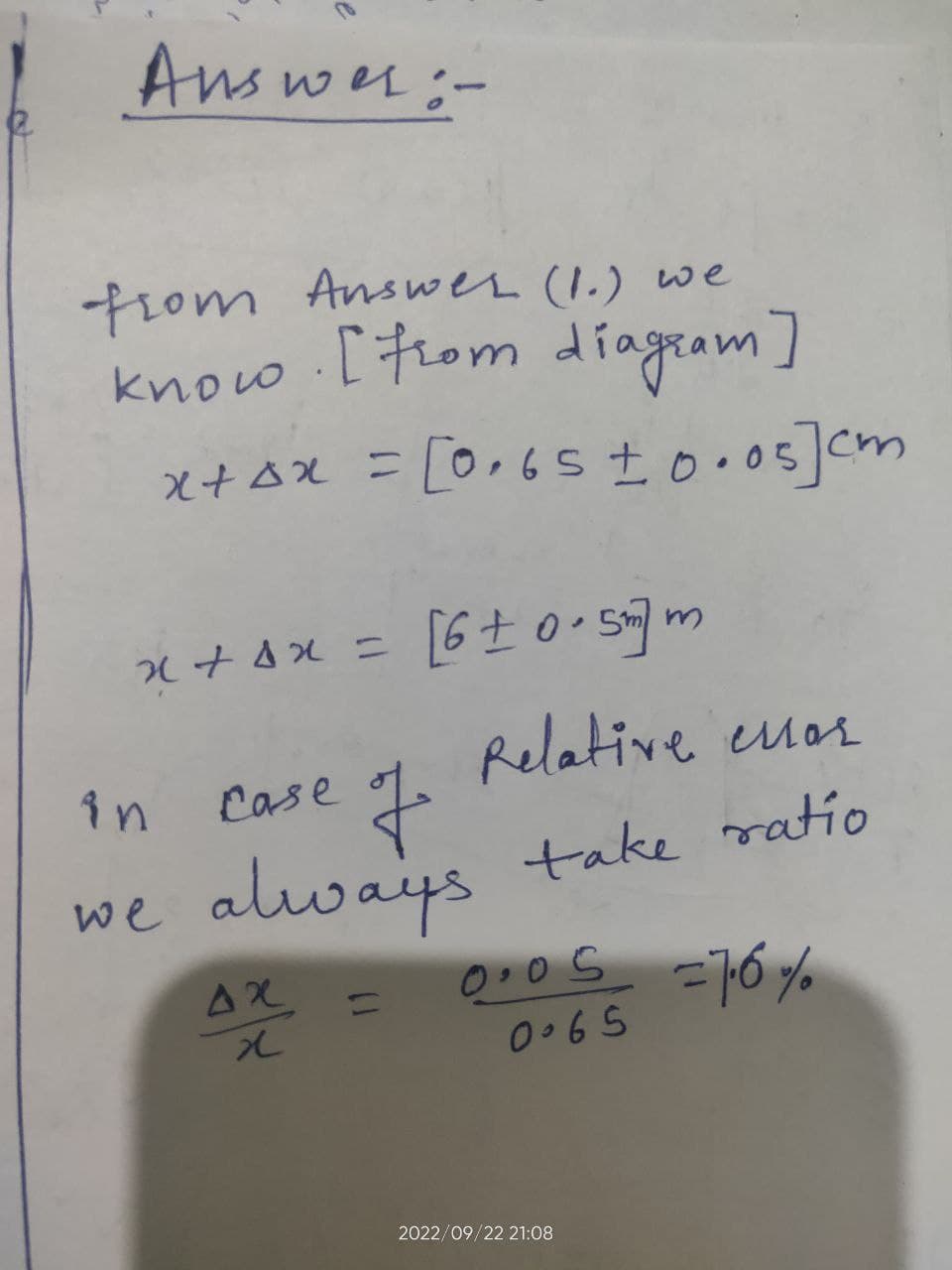1. Determine the width of the pencil at right, including uncertainty. The small graduation lines indicate millimeters. What is the relative uncertainty of your reading? (Remember, we will always express the relative uncertainty as a percentage) 1 2. Let's compare your results from question 1 to the from the measurement of the width of the lab table on page 13. a. Which measurement has greater absolute uncertainty? b. Which measurement has greater relative uncertainty? Comment on why there is such a difference in relative uncertainty. C. 2
1. Determine the width of the pencil at right, including uncertainty. The small graduation lines indicate millimeters. What is the relative uncertainty of your reading? (Remember, we will always express the relative uncertainty as a percentage) 1 2. Let's compare your results from question 1 to the from the measurement of the width of the lab table on page 13. a. Which measurement has greater absolute uncertainty? b. Which measurement has greater relative uncertainty? Comment on why there is such a difference in relative uncertainty. C. 2
Related questions
Question
Question 2

Transcribed Image Text:Question Set 2.1: Uncertainty with Analog Scales
1. Determine the width of the pencil at right, including uncertainty. The small
graduation lines indicate millimeters. What is the relative uncertainty of your
reading? (Remember, we will always express the relative uncertainty as a percentage)
2. Let's compare your results from question 1 to the from the measurement of the width of the lab table on page 13.
a. Which measurement has greater absolute uncertainty?
b. Which measurement has greater relative uncertainty?
Comment on why there is such a difference in relative uncertainty.
C.
3. Determine the reading on the speedometer at right, including uncertainty. What is the
relative uncertainty of your reading? Draw a number line with error bars to describe this
measurement.
WO
4. Determine the reading on the beam balance at right, including
uncertainty. What are the absolute and the relative uncertainty of your
reading? on oq eslind da
dazoq lo spnat en o
14 | Page 11
2
100
40
200
100
50
150 200
5
0
km/h
50 60 70
300
250
6
300
350
308-309
2
perow
80
400
90
Expert Solution
Step 1

Step by step
Solved in 2 steps with 2 images
